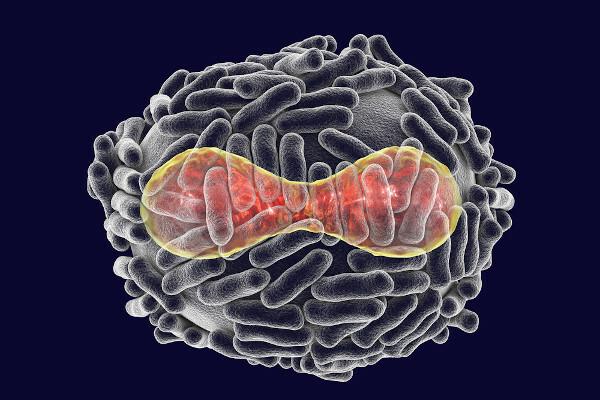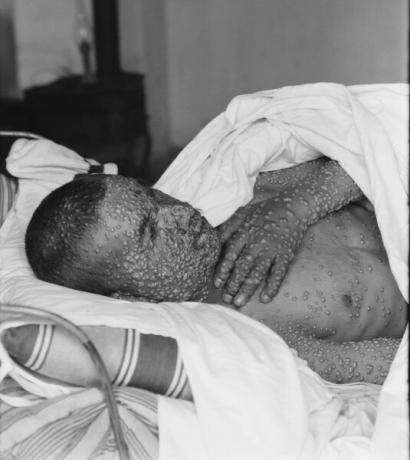THE smallpox is illness described since antiquity and which was completely eradicated from the planet by vaccination. THE World Health Organization declared the eradication of the disease in May 8, 1980, during the 33rd World Health Assembly. Before the vaccine, smallpox was responsible for a large number of deaths. According to the Fiocruz News Agency, "the disease, capable of killing about 30% of those infected, decimated a large part of the population of Rio de Janeiro in the beginning of the 20th century".
Read too: Importance of vaccination - far beyond individual prevention
What is smallpox?
Smallpox is a infectious disease caused by a virusand that stands out as one of the diseases that caused the most deaths in human history. It would have appeared in India, with descriptions in Asia and Africa even before the Christian era. In Brazil, the disease was first described in 1563, in Bahia.

Smallpox is classified into two types:
smallpox major and smallpox minor.smallpox major it is the most lethal type of the disease, with a fatality rate of around 30%. smallpox minor, in turn, is a milder type, with a lethality of less than 1%.Smallpox causative agent
Smallpox is a disease caused by the virus. Variolae Orthopoxvirus, of the family Poxviridae edogenus Orthopoxvirus. the virus is from DNA and can remain viable for several months in the environment.
Smallpox transmission
The transmission of smallpox occurs, most of the time, by inhalation of virus-containing droplets, which are eliminated by the patient when talking, coughing or sneezing. Although less common, smallpox can be contracted when handling clothes, sheets or other objects contaminated by the patient, for example.
Smallpox Symptoms
The average incubation period for smallpox is 12 days. After that, the symptoms appear abruptly, being marked by the onset of febre high, headaches, body aches, dejection and chills. These symptoms last for about four days, and after this period, the disease progresses to the most severe form, with a reduction in fever and appearance of skin rashes.

The injuries start as blemishes (injury without relief), then become papules (solid elevation), and subsequently become vesicles containing fluid and surrounded by a regular erythematous halo. The vesicles evolve to pustules (small pus-filled blisters). During this stage of the disease, the risk of blindness is great, as the lesions cause itching, and by scratching and touching the eyes, the patient can trigger inflammation in the organ.
The lesions subsequently evolve to crusts and the fever regresses. The scabs fall off about 10 days after formation. When they fall off, they can leave permanent scars on the skin. Deaths from smallpox usually occurred due to a massive inflammatory response that provoked shock and triggered the multiple organ failure.
See too: Sepsis - systemic inflammatory response
Smallpox Diagnosis
The diagnosis of smallpox is basically clinical. The laboratory test to diagnose the disease is done, for example, through the cultivation of the virus of the blood or from skin lesions.
Smallpox Treatment
When the disease was still occurring on the planet, no treatment was effective. The indicated treatment tried to alleviate the itching and pain caused by the lesions, it was, therefore, exclusively symptomatic and not curative. The survival rate was directly linked to the type of smallpox acquired. The lethality could reach 30%.
Brief history of smallpox vaccine
The smallpox vaccine was responsible for eradicating the disease from the planet, putting an end to years of deaths and irreversible sequelae. The smallpox vaccine was created by Edward Jenner, a doctor from England.
He noted in 1789 that people who milked cows did not get smallpox after acquiring cowpox. In 1796, he extracted the pus present in a lesion from a person who had contracted cowpox and inoculated it into a healthy boy, who acquired the disease mildly.
After some time, Jenner inoculated, in the same boy, the material taken from the pustule of a person with smallpox. The boy did not contract the disease, which meant he was immune to it. Jenner then experimented with other people, including his own son. You results of the experiment were published in 1798.
By Vanessa Sardinha dos Santos
Biology teacher

